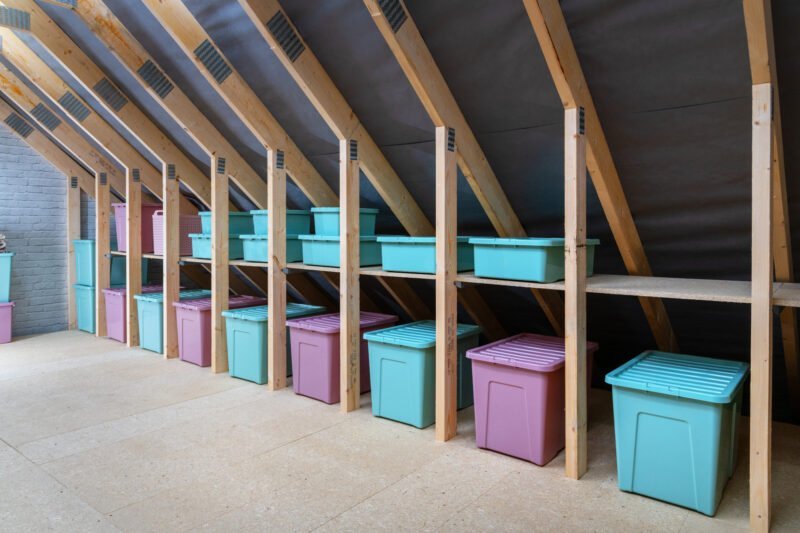Heating and insulation expert Dave Raval said October is a “pivotal” month for people to prepare their homes for winter.
A heating and insulation expert has shared five “easy” and “inexpensive” ways to slash bills in preparation for winter.
Energy bills dropped on October 1 in accordance with Ofgem’s new lower price cap, however, costs still remain staggeringly high at £1,834 a year for a typical household.
From draught-proofing to Thermostatic Radiator Valves (TRV), people may be able to knock hundreds of pounds off their heating bills and now is the “pivotal” time to look into it.
Dave Raval, CEO of LoftZone, commented: “October is a pivotal month for homeowners to proactively prepare their homes for winter – don’t wait for the first frost to take action. There are lots of things everybody could do in their own homes that are quite easy and inexpensive to help save on heating bills.
“The best energy saving is the energy you don’t use, so looking at where heat may be escaping is key. You want to avoid paying to heat the air in your house and letting it go straight out.”
Draught-proofing
According to Mr Raval, the “first thing” he would do to make heating more efficient at home is to look for draughts.
He said: “Don’t let the money you’ve spent on heating your house seep through the gaps. One cold evening, go around with your hand across every window and across every door and feel for draughts.”
Older houses typically lose more heat through gaps in doors, floorboards, and windows, so it’s vital to find out where these gaps are and plug them.
Mr Raval said: “We asked Britons and only 13 percent have draught excluders to help keep their home warm, but these are a cost-effective solution. You can buy products online and solutions from DIY stores.”
It is also worth checking windows and doors are sealed properly. Mr Raval suggested picking up some cheap adhesive foam strips to block cold air.
He said: “Tape around parts of your window can also help. Perhaps consider thicker curtains – door curtains used to be a popular thing but have gone out of fashion, but these are great for keeping in the heat too.”
Loft insulation
Heat rises and in a typical British home and according to Mr Raval, 25 percent of heat goes out through the ceiling, into the loft and out of through the roof.
He said: “Most people have some loft insulation, usually between the joists and maybe two to three inches, but you need a lot more than you think. The Government recommendation is a minimum is 300 millimetres, which is almost a foot.”
Insulation stops heat escaping by “acting as the woolly hat for the home”, trapping the heat inside so people need less energy to heat it constantly and can subsequently save “hundreds of pounds”.
However, it doesn’t stop at simply adding insulation to the loft. Mr Raval said: “Most people don’t know that squashing insulation makes it 50 percent less efficient. We love to use our lofts for storage but don’t put boxes straight on the insulation or board down directly onto the joists. Doing this will double the heat loss which has a big impact on your bills.”
Mr Raval explained: “Fluffy loft insulation works by trapping air so when you squash it you get rid of all those air bubbles, and it doesn’t work so well. Raised loft boarding is the best at preventing this. A raised loft system works by creating a raised platform for boarding to rest on above the insulation while allowing it to retain its full depth to help with your energy savings.”
Radiator fans
As heat rises, the ceiling gets warm first, then only afterwards does the lower part of the room start to warm up. To tackle this, Mr Raval said: “Consider a radiator fan, which you can put on top of a radiator. It simply blows the heat onto you, rather than let it drift upwards, so you feel warmer, sooner.”
Save hot water
There are obvious ways to save hot water, such as taking quicker showers and having fewer baths, but often people forget the water used whilst washing up.
Mr Raval said: “Use a bowl or plug the sink to avoid washing every item under the hot water tap. That is just heated water you’ve paid for that is going down the plughole. You can rinse cleaned crockery with cold water, too.”
Thermostatic Radiator Valves
Mr Raval said: “If you have radiators, make sure each one has a TRV – a thermostatic radiator valve.”
A thermostatic radiator valve (TRV) is a device used with radiators in a heating system to control the temperature of a room. It’s like a thermostat for individual radiators.
Mr Raval said: “Most homes have one single thermostat controlling your temperature, but many rooms need less heat. Ask yourself – does your bedroom need to be hot at midday?
Does your hall need to be as warm as your lounge? TRVs can be fitted without needing to do any plumbing; they just screw on and allow you to turn down or up individual radiators – easy.”
Find this article published on The Daily Express, MSN News and The Business Telegraph.
